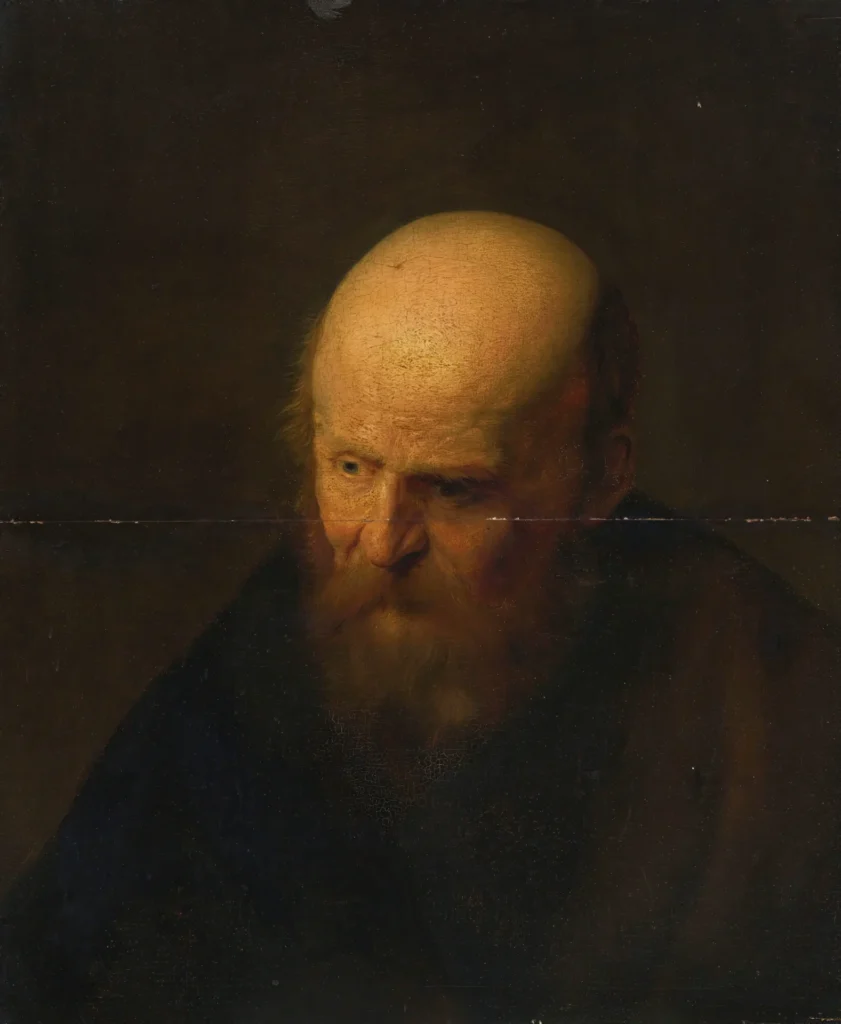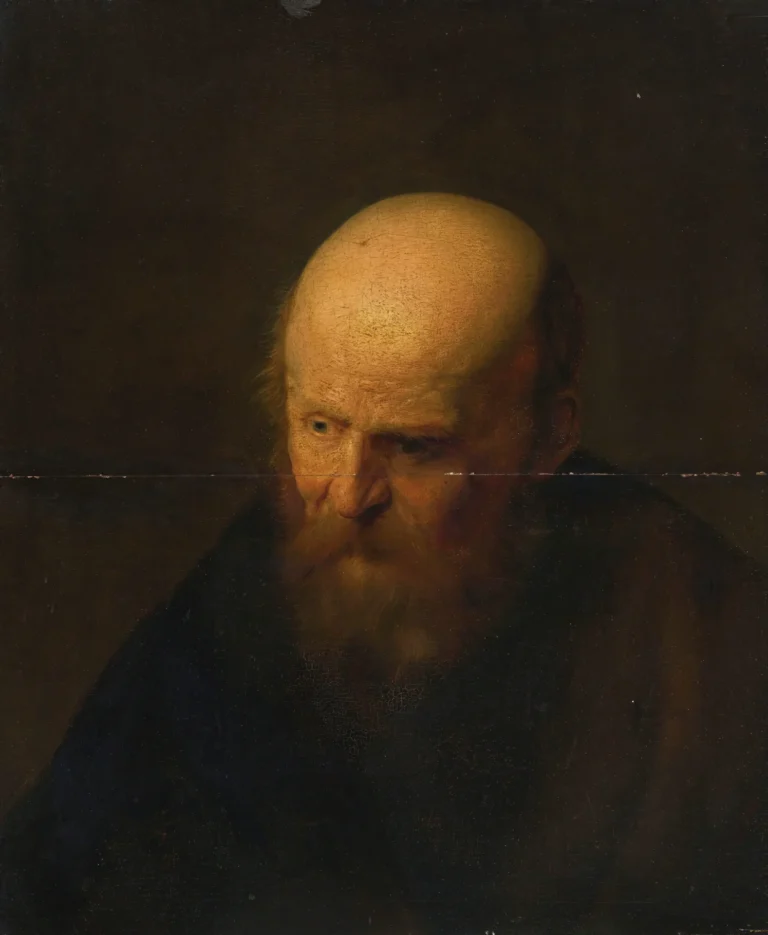Head of an Old Man
Head of an Old Man is a striking portrayal crafted by Rembrandt in 1632, showcasing an elderly male figure draped in a cap. The subject's furrowed brow and expressive features reflect wisdom and life experience. Rembrandt utilized thick brush strokes and dramatic lighting to illuminate the man’s face, emphasizing his piety and sagacity. The artwork is a notable example of Rembrandt's exploration of human emotion, capturing the dignity of his subjects with meticulous detail.
Year 1632
About the Artwork
This painting, created during Rembrandt's early period, demonstrates his experimentations with chiaroscuro and textural techniques. It is believed that the work reflects the artist's interest in the transient nature of life and the profundity found in age. As one of the recognized tronies, which are non-narrative character studies, it sheds light on Rembrandt's ability to explore emotion and age in a way that resonates with viewers, making the mundane feel monumental.
Did You Know
Liked what you see? Add it to your collection.
Enjoyed reading? Share it.
... continued
Head of an Old Man in a Cap
This painting, described at the Agnes Etherington Art Centre, depicts an elderly man with a furrowed brow, downy beard, and dark eyes. It is characterized by Rembrandt's early style, featuring thick, unblended strokes and scratches made with the butt-end of the paintbrush to convey individual hairs. The painting is illuminated from above and conveys a sense of piety and sagacity. It is signed with the monogram 'RHL' for 'Rembrandt Harmenszoon Leidensis'.
Head of a Bald, Old Man
This painting, dated to 1632, is housed at the Gemaldegalerie Alte Meister in Kassel, Germany. It shows a bald, old man and is noted for its detailed and expressive portrayal. The original size of the painting is 48.7 x 40.2 cm. This work is another example of Rembrandt's focus on the human face and emotion.
General Characteristics
Rembrandt's portraits of old men often feature strong, directional lighting and a deep exploration of emotion and character. These works were part of his broader contribution to the genre of tronies, which were character studies devoid of narrative attributes, focusing instead on light, emotion, and the particulars of the human face.










